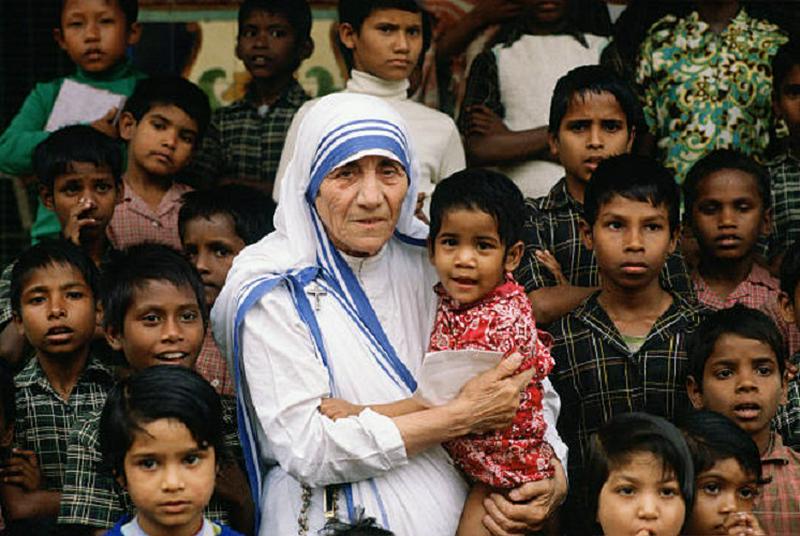Mother Teresa Wins The 1979 Nobel Prize
By | September 16, 2021


Her Life Before Becoming Mother Teresa
Mother Teresa was born Agnes Gonxha Bojaxhiu in 1910 in Macedonia. She felt her first religious calling at 12 and then left home at 18 and joined the joined the Sisters of Loreto in Rathfarnham, Ireland, where she stayed for a year. She then transferred to the same convent in Darjeeling, India. In 1931, she committed to being a nun, taking the name Teresa after Thérèse de Lisieux, the patron saint of missionaries. However, she chose to use the Spanish spelling of her chosen name as a nun in the convent had already chosen the name Theresa. For 15 years, she taught History and Geography at St. Mary’s High School in Kolkata (Calcutta), where she took her solemn vows in 1937; in 1944, she became headmistress of the school. In 1948, she gave up her habit, which she exchanged for a white cotton sari with a blue border. She then began living in the slums so she could work with the poor.

The Missionaries Of Charity
In 1950, she founded the Missionaries of Charity, which began with only 12 members. The Missionaries was an organization which had the goal of serving “the hungry, the naked, the homeless, the crippled, the blind, the lepers, all those people who feel unwanted, unloved throughout society, people that have become a burden to the society and are shunned by everyone."

Expanding Care For Those Who Need It
She opened her first hospice in 1952, converting a Hindu temple into the Kalighat Home for the Dying, which she renamed Kalighat, Home for the Pure of Heart. In the hospice, individuals would receive medical care, and die according to their faith. She also opened a hospice for lepers, and a haven for orphans and homeless youth called Nirmala Shishu Bhavan, the Children's Home of the Immaculate Heart. Over time, the Missionaries of Charity expanded, attracting men and women who provided care for the poor, blind, disabled, aged, and other groups.

Receiving The Nobel Prize
When the Norwegian Nobel Committee selected Mother Teresa as the recipient of the Peace Prize, they noted her work in bringing help to those who are suffering, as well as her respect for the dignity of the individual human being. She gave her acceptance speech in the Aula of the University of Oslo, Norway, she did not attend the honor banquet and asked that the award money be used to help the poor in India.

After The Peace Prize
Her work continued after she received the Nobel Peace Prize. Notably, in 1982, in the midst of the Siege of Beirut, Mother Teresa brokered a cease-fire between the Israeli army and the Palestinian guerillas. She traveled through the war zone with Red Cross workers so that she could rescue 37 children who were in a front-line hospital. She also continued to expand her missions.
